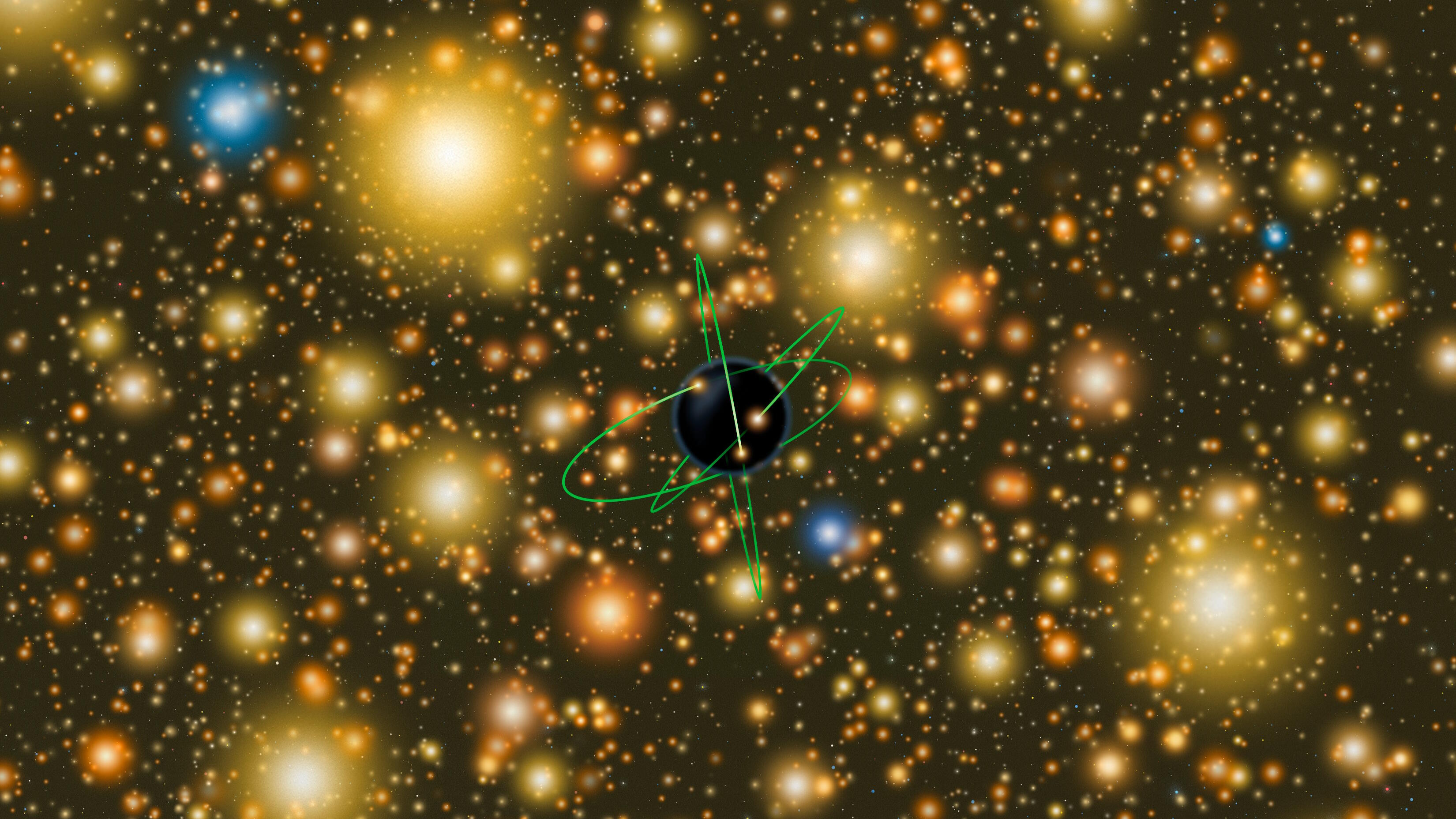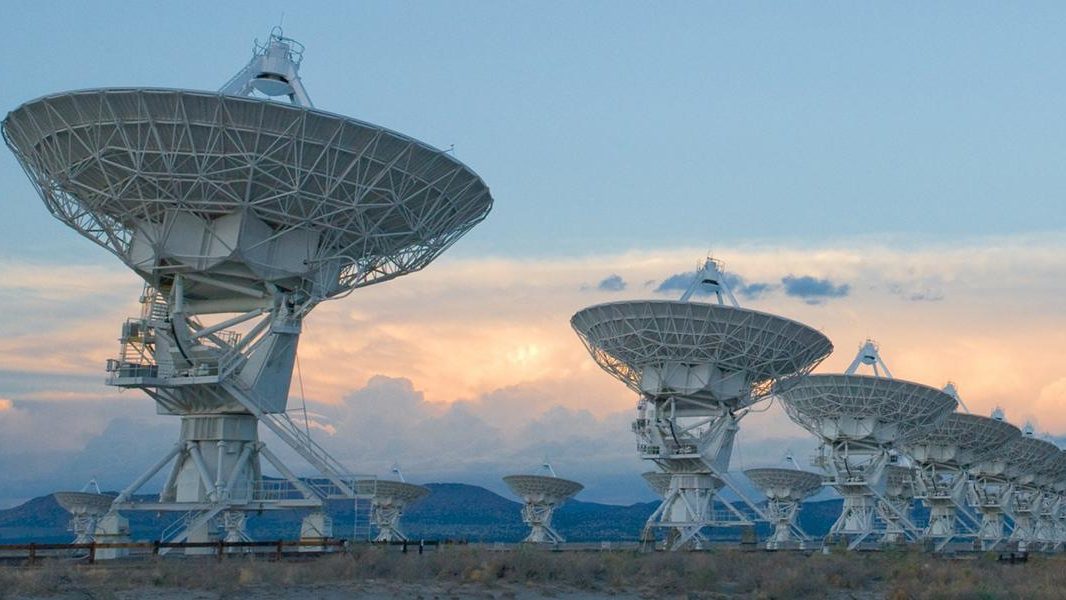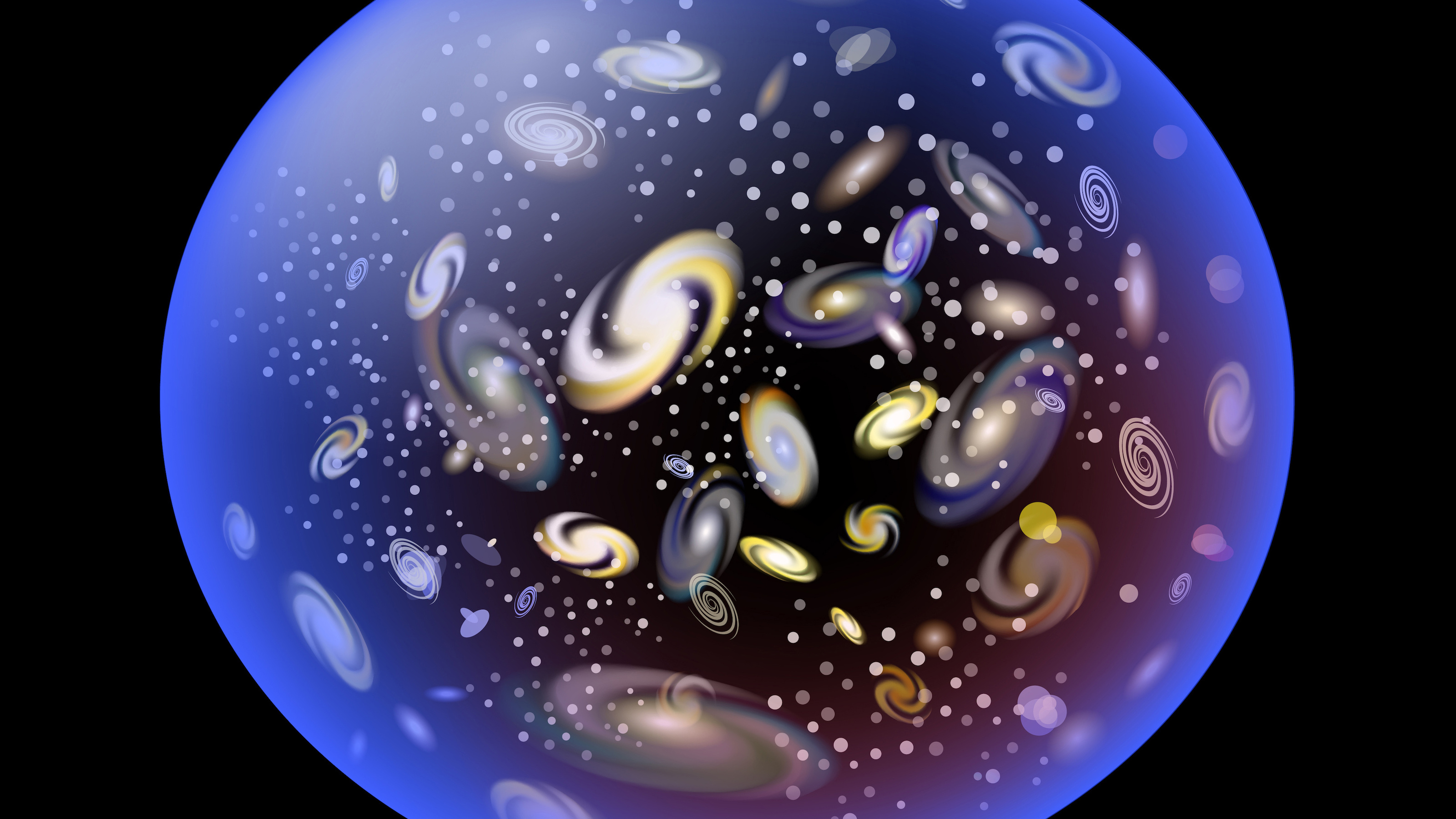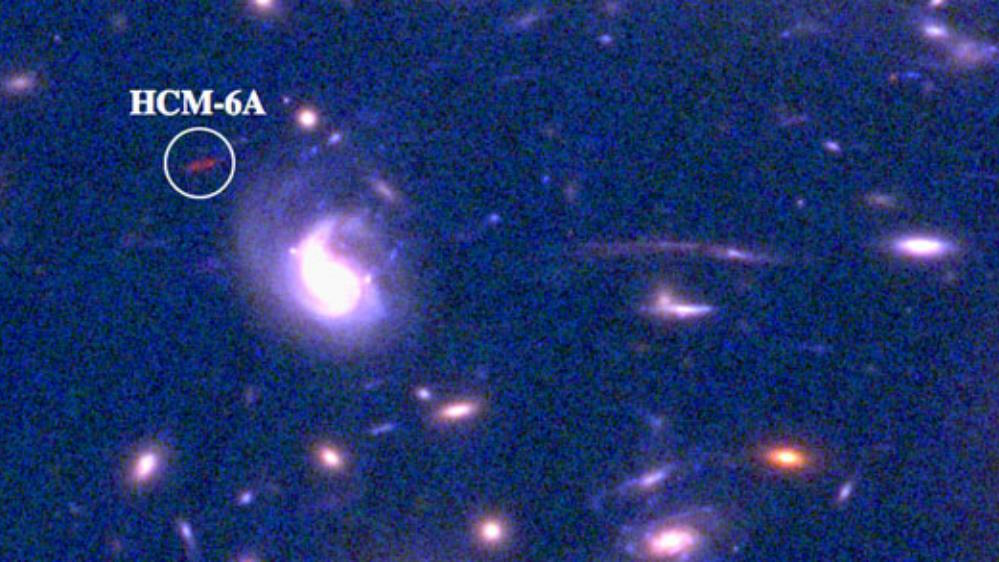Messier Monday: The Biggest One of them All, M87
Of all the galaxies in our local supercluster, one outweighs them all.
“I recognize my limits, but when I look around I realise I am not living, exactly, in a world of giants.” -Giulio Andreotti
Each Monday, we’ve chosen one of the night sky wonders that makes up the Messier catalogue, the first accurate catalogue of deep-sky objects easily visible with a small, amateur telescope from Earth. But of all these objects — from star clusters to planetary nebulae, from globular clusters to supernova remnants, and from star-forming regions to entire galaxies — only one can be the largest. Today, that’s exactly what we’re going to shoot for.
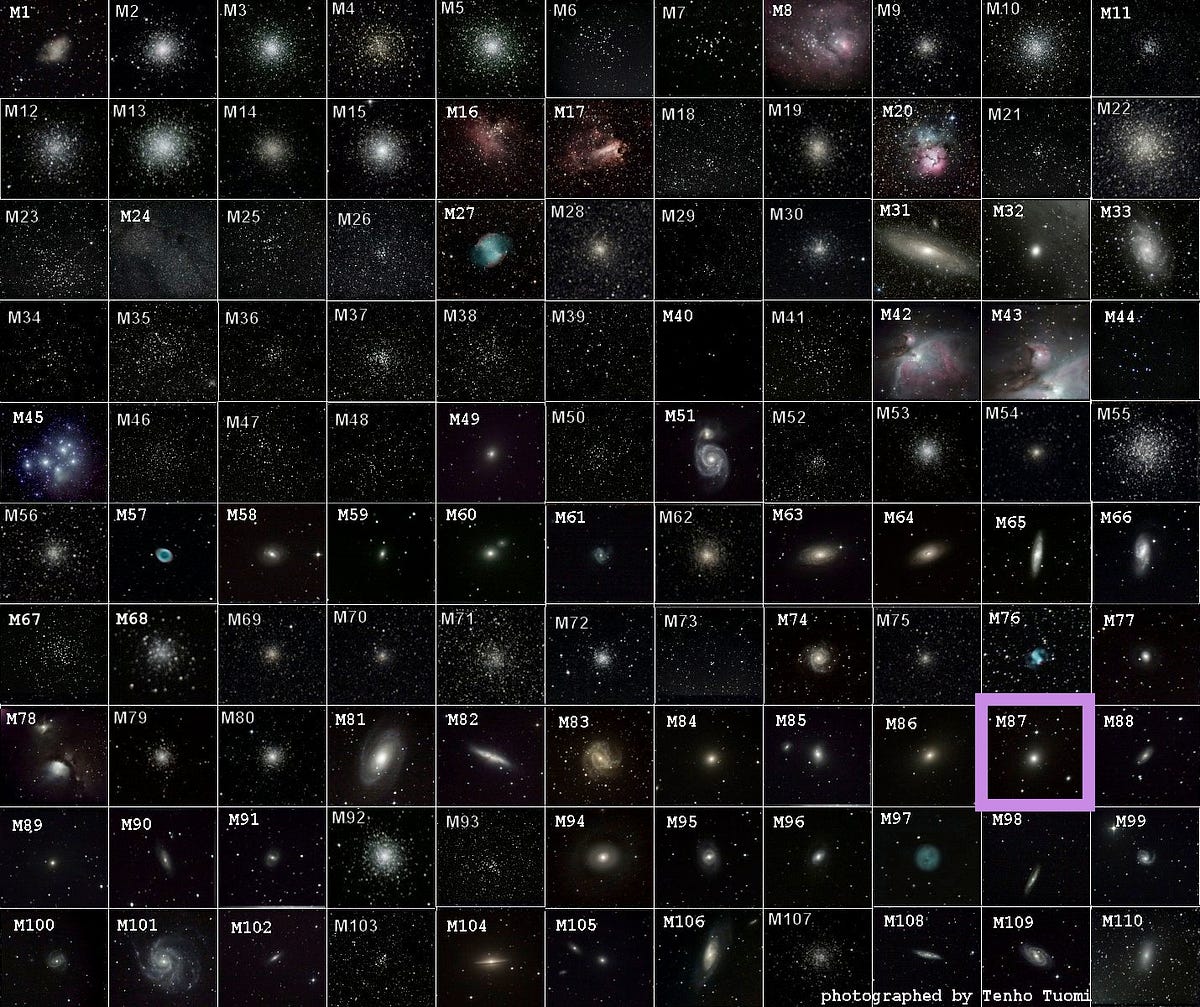
The vast majority of the deep-sky objects visible from Earth are contained either within the disk or the halo of our own galaxy, and with good reason: closer things appear brighter to us. We’re located on the outer edge of a tendril of our local supercluster, with only a few dozen modest galaxies within tens of millions of light years. But some 50-to-60 million light years distant lies the Virgo Cluster, the most massive and dense cluster of galaxies in our local Universe. And at the very heart of it lies the biggest, most massive galaxy within hundreds of millions of light years of our home: Messier 87.
As dedicated skywatchers try and catch all 110 Messier objects (and you can participate remotely), make sure you don’t miss the biggest one. Here’s how to find it.
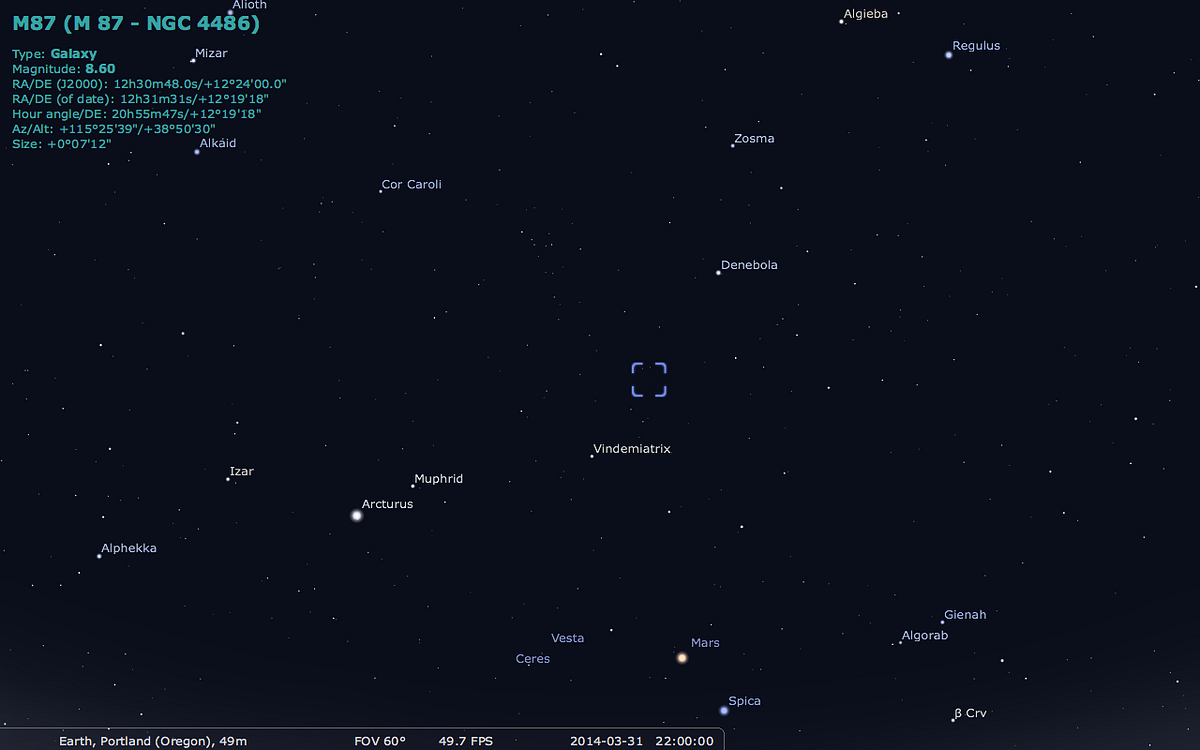
Following the arc of the Big Dipper’s handle, you’ll arrive at the orange giant star Arcturus, the brightest star in the Northern Hemisphere, and then can continue on to bright blue Spica, which is situated right next to Mars at the present time. But below the “bowl” of the Big Dipper lies the prominent constellation of Leo the Lion, heralded by its brightest members Regulus and Denebola. If you draw an imaginary line from Regulus through Denebola and head towards the space between Arcturus and Spica, you’ll come to the slightly less bright (but still prominent) star Vindemiatrix, and it’s between Vindemiatrix and Denebola you’ll need to look for Messier 87.
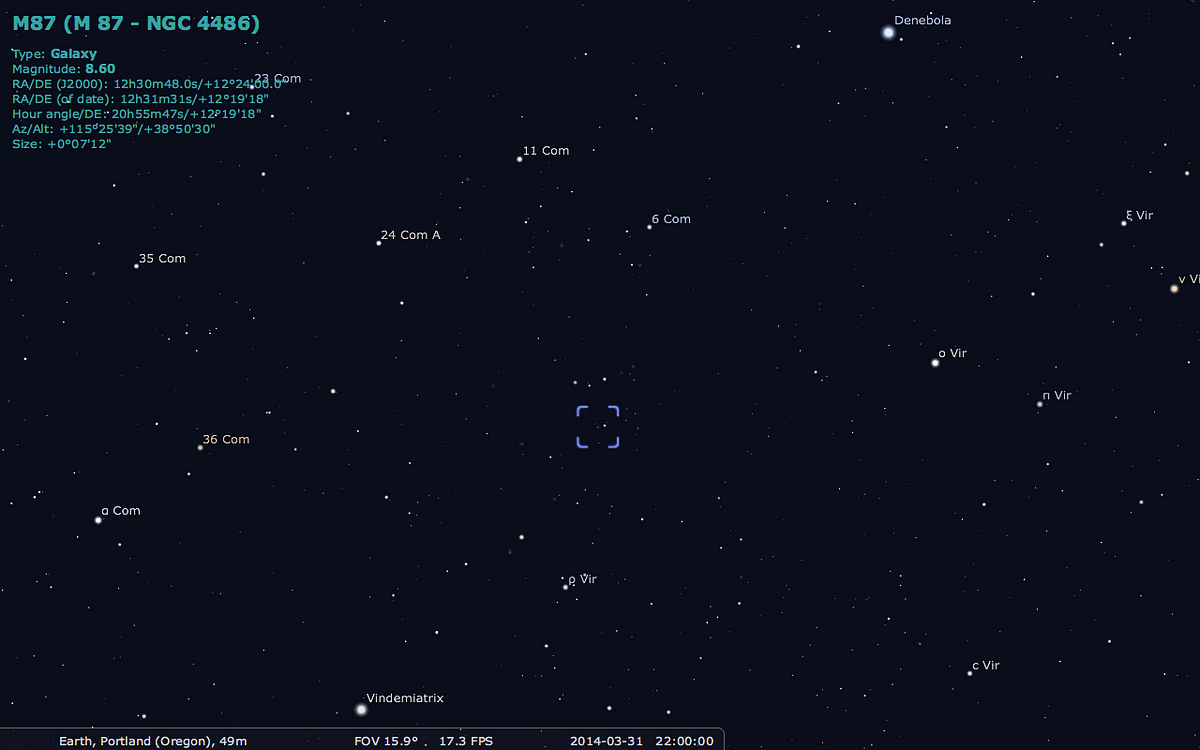
Most of the stars along that path are invisible to the naked eye, but under relatively clear-and-dark skies, 6 Comae Berenices and ρ Virginis — labelled above — can clearly be spotted. If you draw an imaginary line connecting Denebola to Vindemiatrix and another one connecting 6 Comae Berenices to ρ Virginis, there will be one point where they intersect. And that’s where you should point your telescope.
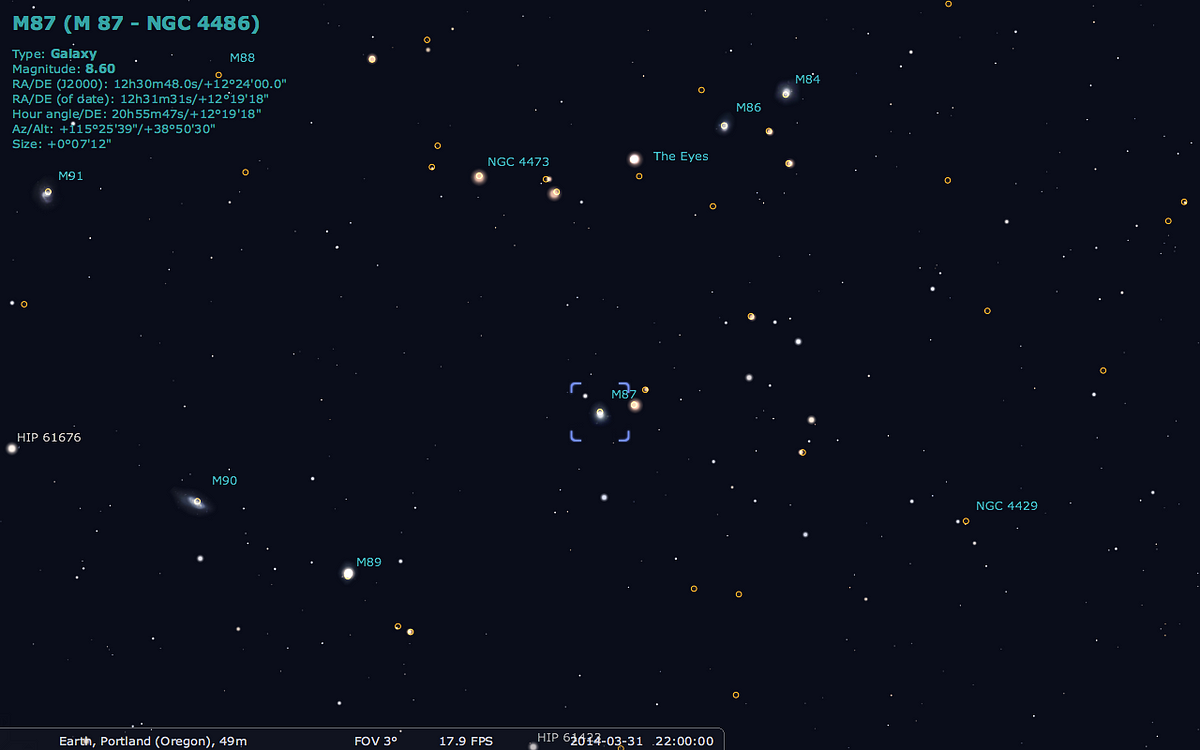
Although there aren’t any bright stars of note in this region, there are a slew of dimmer stars, but also a plethora of faint, fuzzy, extended nebulous regions: the galaxies of the Virgo Cluster. Through long-exposure astrophotography, this region simply sparkles with wonder.
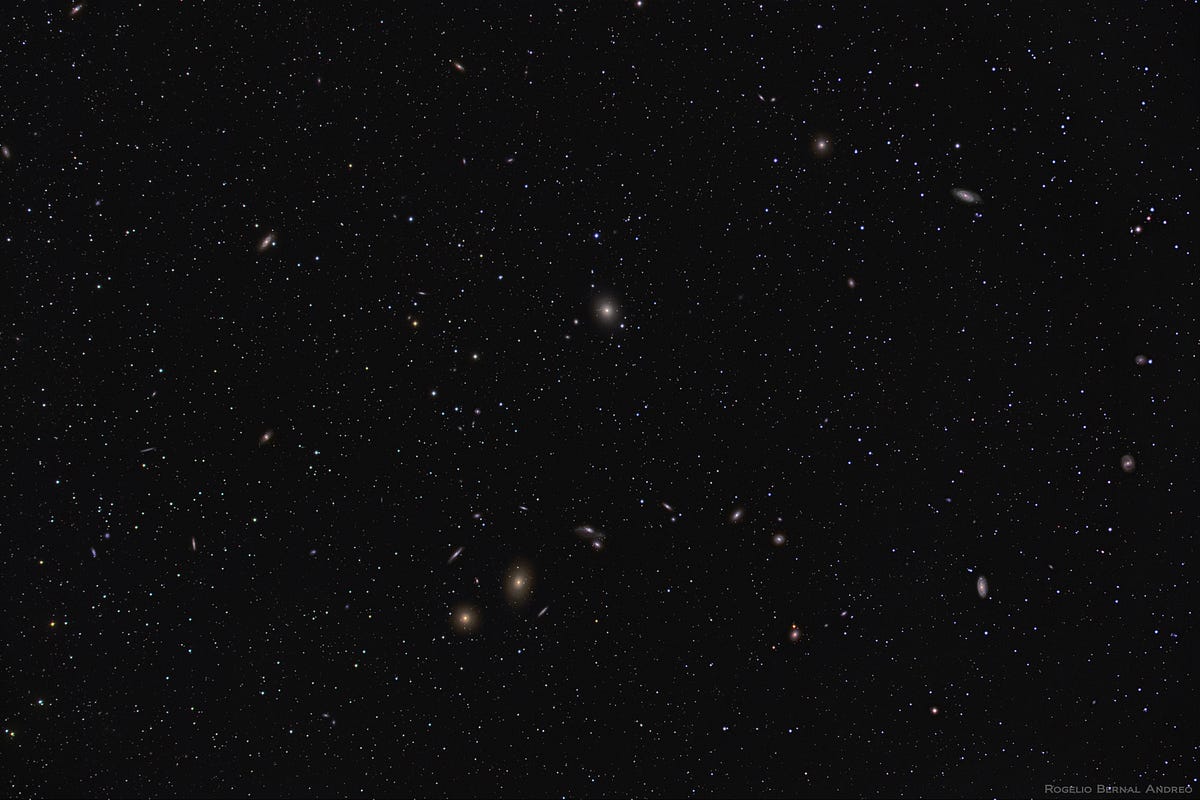
And at the heart of the cluster lies its single, most massive galaxy of all: the giant elliptical galaxy Messier 87. Although it didn’t appear so spectacular to Messier himself — when he discovered it in 1781 — we sure do know an awful lot more about it now. That, and we have some images and data that really show us how impressive this behemoth truly is!
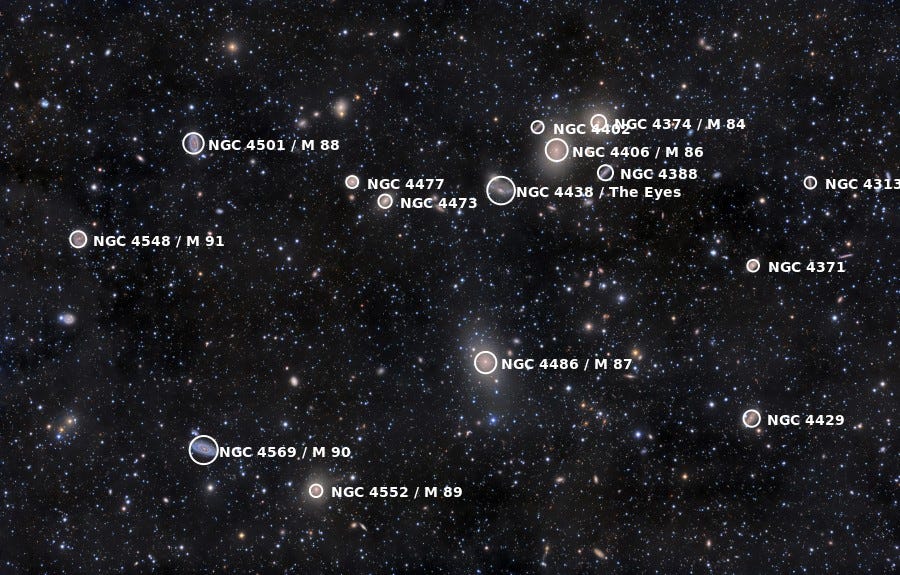
For starters, I want you to think of our Milky Way: a spiral galaxy that’s around 100,000 light-years across, with hundreds of billions of stars, maybe a trillion Suns’ worth of mass, and a couple of hundred globular clusters in its halo. Oh, and a supermassive black hole at the center that, on its own, contains the mass of four million Suns. In the future, our entire local group will merge together, maybe tripling the Milky Way’s current mass, adding hundreds more globular clusters, hundreds of billions more stars and growing our black hole into the tens of millions of solar masses. That’s our far future, when everything that’s gravitationally bound to us merges.

Now, let’s compare that to Messier 87 as it is right now.
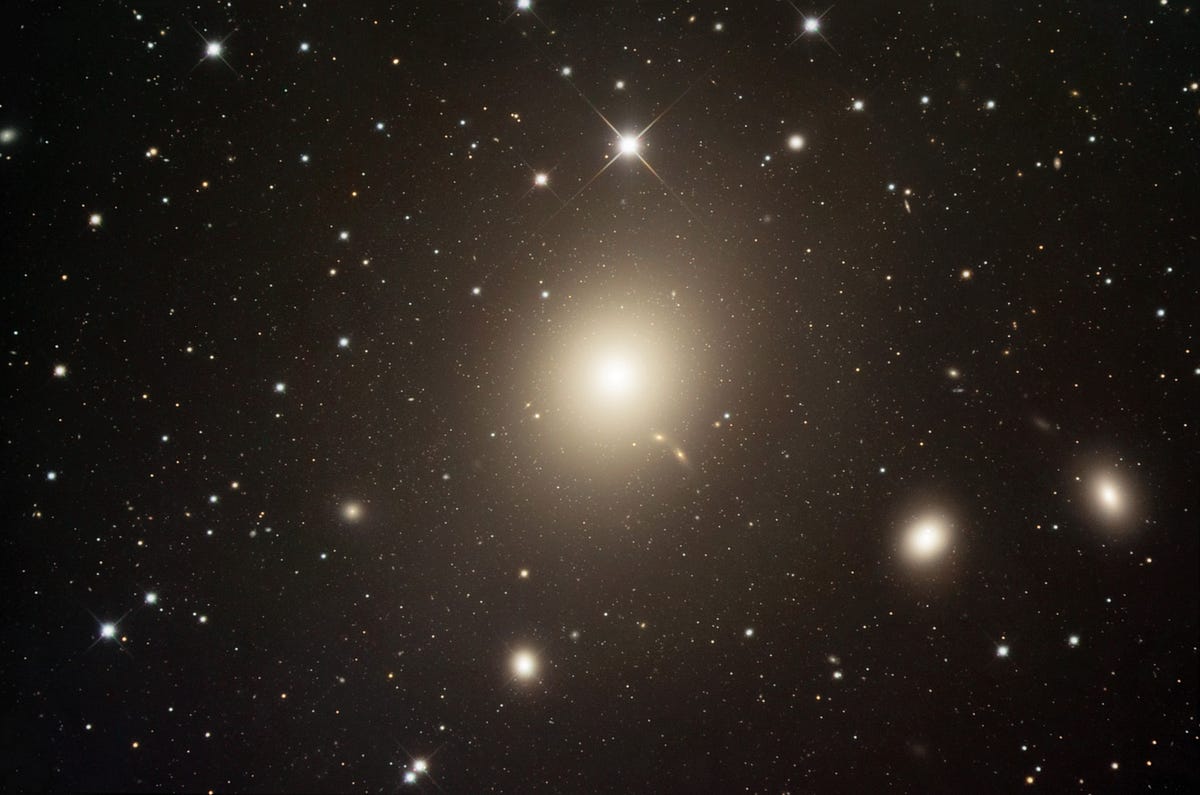
Messier 87 is a giant elliptical galaxy, the type most commonly found after a series of major mergers of large, Milky Way-like spirals. In the center of the Virgo Cluster, elliptical galaxies dominate, and can reach proportions far larger than their spiral predecessors ever did. How big is “giant,” you ask?
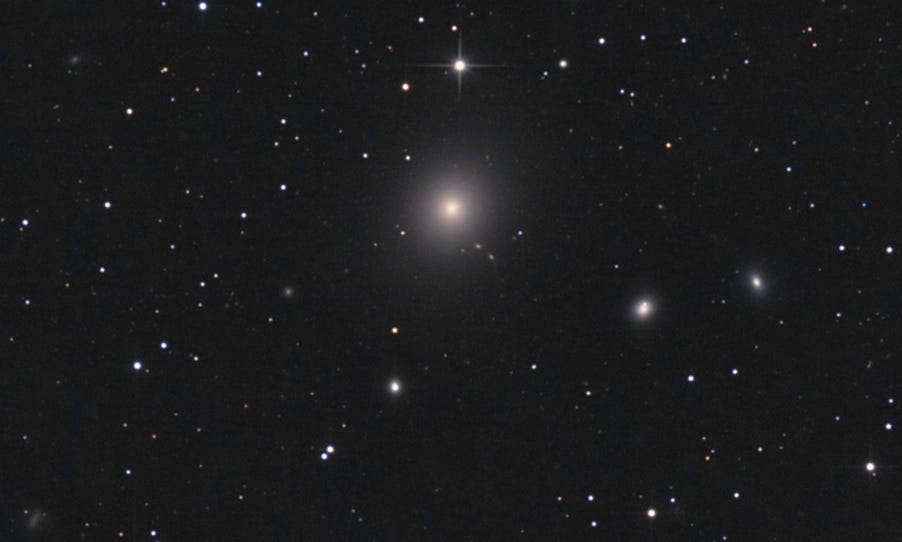
Try half-a-million light-years in diameter, or about five times the extent, in all directions, the longest direction of the Milky Way. Its mass? A whopping two hundred times that of our galaxy today, and about 70 times as great as our entire local group. And as far as globular clusters go? Take a look at this image, below.
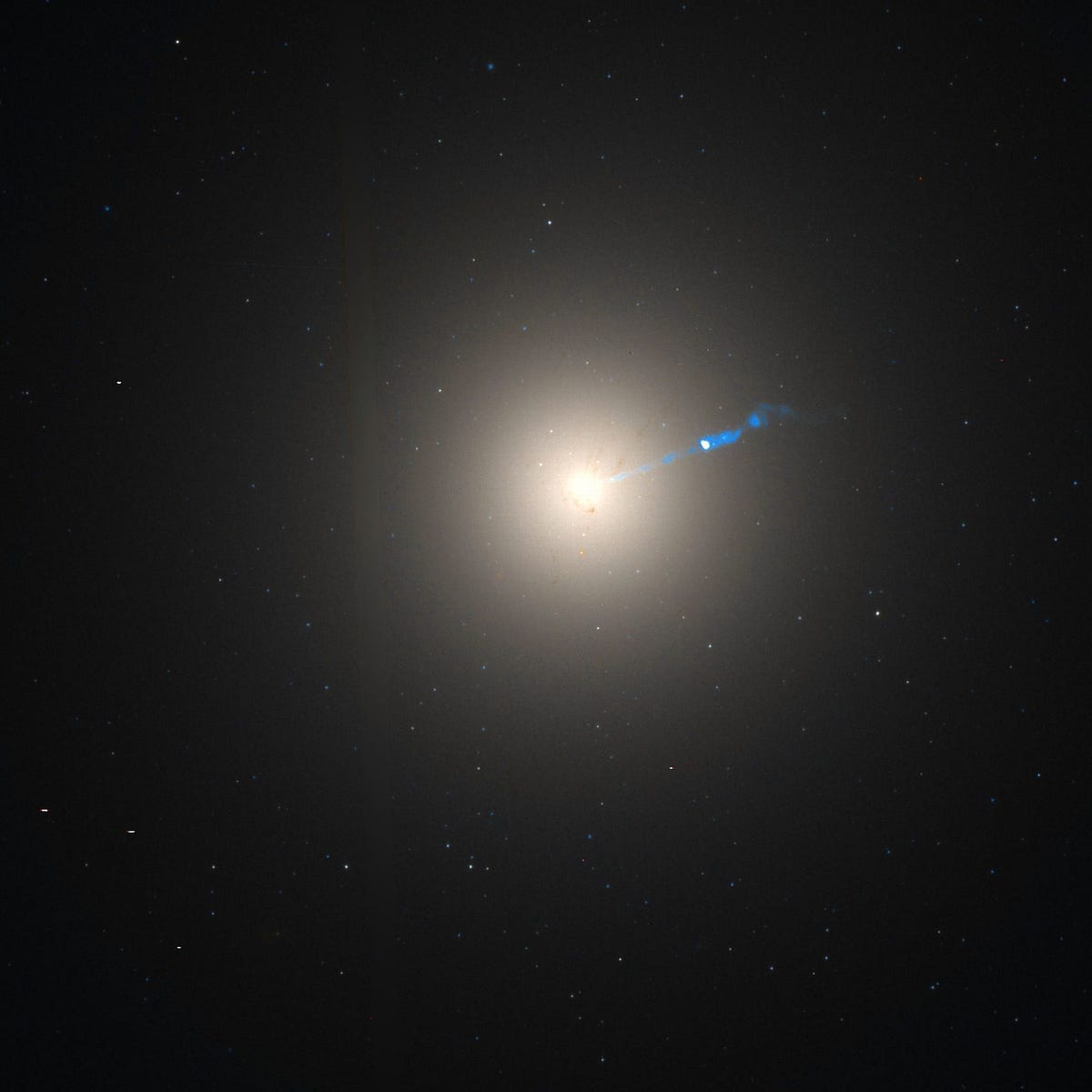
Do you see those little “points” distributed through the halo of this behemoth, that look like they could be bright stars? Those aren’t stars at all, but dense collections of hundreds of thousands of stars each, i.e., globular clusters, and there are around 12,000 of them in Messier 87 alone. And finally, did you notice something unique about the center of this galaxy?

There’s a jet of ionized plasma streaming from the center, spanning 5,000 light-years on its own! What could cause this? Why, a supermassive black hole that dwarfs our own, of course! This is something that becomes apparent if we look in many different wavelengths, as both the X-ray and radio show the telltale signs of an active black hole.

It’s the largest one in our nearby Universe, with an estimated mass of four billion Solar masses, or about a thousand times as massive as our own galaxy’s! The radiation across many different wavelengths coming from its center has been one of the most educational things for astronomy as far as teaching us that these jets, active galaxies and quasars are likely to be different manifestations, magnitude and orientations of the exact same phenomenon: matter being accelerated by a supermassive black hole.

But there’s one way that the Milky Way has this galaxy beat: the amount of dust.
Interstellar dust is made up of neutral molecules capable of blocking light, and our Milky Way has hundreds of millions of Solar masses worth in it. But the intense X-rays emitted by the core of Messier 87 destroys any new dust on timescales of just tens of millions of years; at most, there are only 70,000 Solar masses worth of dusty material in this galaxy at present.

In the future, as the various galaxies in this cluster merge together, adding on to Messier 87, it will most likely grow to more than ten times its current mass, topping the quadrillion-solar-mass mark in time. It’s the largest galaxy for hundreds of millions of light years, for sure. But it’s got a long way to go before it challenges the record-holder for biggest galaxy in the known Universe!
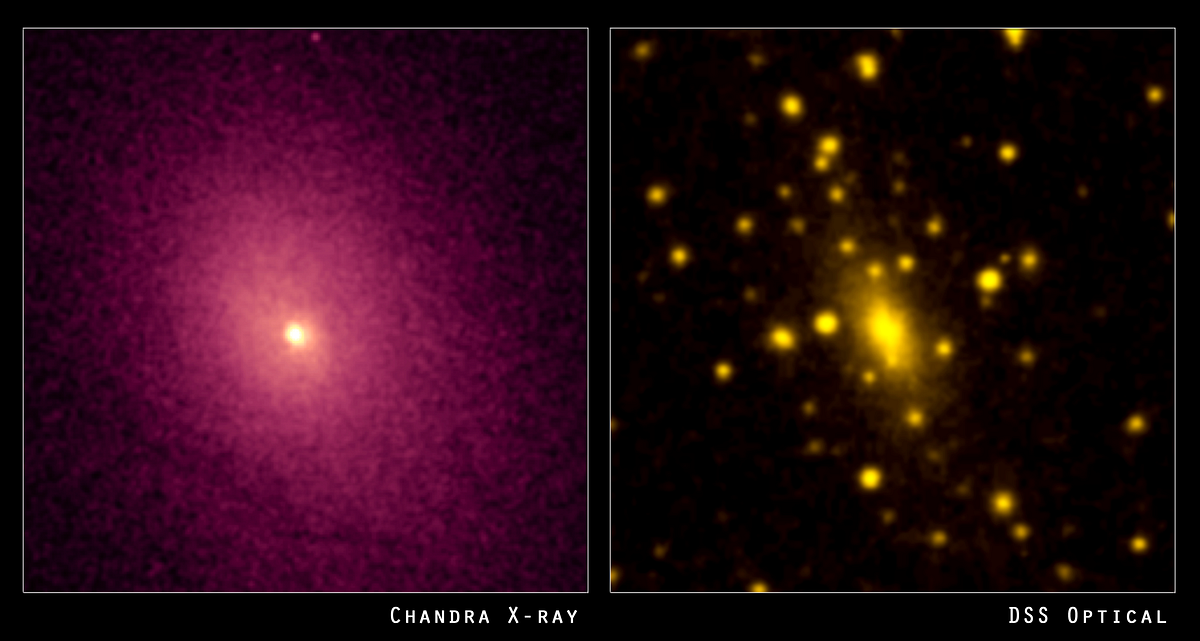
That honor goes to IC 1101, which is nearly three times the extent of Messier 87 in its longest direction, and contains about four times as many stars. But IC 1101 is some twenty times farther away than Messier 87, at over a billion light-years distant.
So when you start to feel like the world is a small place, remember that there are bigger things out there than even our galaxy, and even than the biggest galaxies in our neighborhood. The Universe is full of surprises, wonders, and magnificent stories that it tells us about itself, if only we remember to ask the right questions and listen to its answers.

And that’s the cosmic story of our supercluster’s greatest galaxy! Have a look back at all our previous Messier Mondays:
- M1, The Crab Nebula: October 22, 2012
- M2, Messier’s First Globular Cluster: June 17, 2013
- M3, Messier’s First Original Discovery: February 17, 2014
- M5, A Hyper-Smooth Globular Cluster: May 20, 2013
- M7, The Most Southerly Messier Object: July 8, 2013
- M8, The Lagoon Nebula: November 5, 2012
- M11, The Wild Duck Cluster: September 9, 2013
- M12, The Top-Heavy Gumball Globular: August 26, 2013
- M13, The Great Globular Cluster in Hercules: December 31, 2012
- M15, An Ancient Globular Cluster: November 12, 2012
- M18, A Well-Hidden, Young Star Cluster: August 5, 2013
- M20, The Youngest Star-Forming Region, The Trifid Nebula: May 6, 2013
- M21, A Baby Open Cluster in the Galactic Plane: June 24, 2013
- M25, A Dusty Open Cluster for Everyone: April 8, 2013
- M29, A Young Open Cluster in the Summer Triangle: June 3, 2013
- M30, A Straggling Globular Cluster: November 26, 2012
- M31, Andromeda, the Object that Opened Up the Universe: September 2, 2013
- M32, The Smallest Messier Galaxy: November 4, 2013
- M33, The Triangulum Galaxy: February 25, 2013
- M34, A Bright, Close Delight of the Winter Skies: October 14, 2013
- M36, A High-Flying Cluster in the Winter Skies: November 18, 2013
- M37, A Rich Open Star Cluster: December 3, 2012
- M38, A Real-Life Pi-in-the-Sky Cluster: April 29, 2013
- M39, The Closest Messier Original: November 11, 2013
- M40, Messier’s Greatest Mistake: April 1, 2013
- M41, The Dog Star’s Secret Neighbor: January 7, 2013
- M42, The Great Orion Nebula: February 3, 2014
- M44, The Beehive Cluster / Praesepe: December 24, 2012
- M45, The Pleiades: October 29, 2012
- M46, The ‘Little Sister’ Cluster: December 23, 2013
- M47, A Big, Blue, Bright Baby Cluster: December 16, 2013
- M48, A Lost-and-Found Star Cluster: February 11, 2013
- M49, Virgo’s Brightest Galaxy: March 3, 2014
- M50, Brilliant Stars for a Winter’s Night: December 2, 2013
- M51, The Whirlpool Galaxy: April 15th, 2013
- M52, A Star Cluster on the Bubble: March 4, 2013
- M53, The Most Northern Galactic Globular: February 18, 2013
- M56, The Methuselah of Messier Objects: August 12, 2013
- M57, The Ring Nebula: July 1, 2013
- M60, The Gateway Galaxy to Virgo: February 4, 2013
- M63, The Sunflower Galaxy: January 6, 2014
- M64, The Black Eye Galaxy: February 24, 2014
- M65, The First Messier Supernova of 2013: March 25, 2013
- M66, The King of the Leo Triplet: January 27, 2014
- M67, Messier’s Oldest Open Cluster: January 14, 2013
- M68, The Wrong-Way Globular Cluster: March 17, 2014
- M71, A Very Unusual Globular Cluster: July 15, 2013
- M72, A Diffuse, Distant Globular at the End-of-the-Marathon: March 18, 2013
- M73, A Four-Star Controversy Resolved: October 21, 2013
- M74, The Phantom Galaxy at the Beginning-of-the-Marathon: March 11, 2013
- M75, The Most Concentrated Messier Globular: September 23, 2013
- M77, A Secretly Active Spiral Galaxy: October 7, 2013
- M78, A Reflection Nebula: December 10, 2012
- M79, A Cluster Beyond Our Galaxy: November 25, 2013
- M81, Bode’s Galaxy: November 19, 2012
- M82, The Cigar Galaxy: May 13, 2013
- M83, The Southern Pinwheel Galaxy, January 21, 2013
- M85, The Most Northern Member of the Virgo Cluster, February 10, 2014
- M86, The Most Blueshifted Messier Object, June 10, 2013
- M87, The Biggest One of them All, March 31, 2014
- M88, A Perfectly Calm Spiral in a Gravitational Storm, March 24, 2014
- M92, The Second Greatest Globular in Hercules, April 22, 2013
- M93, Messier’s Last Original Open Cluster, January 13, 2014
- M94, A double-ringed mystery galaxy, August 19, 2013
- M95, A Barred Spiral Eye Gazing At Us, January 20, 2014
- M96, A Galactic Highlight to Ring in the New Year, December 30, 2013
- M97, The Owl Nebula, January 28, 2013
- M98, A Spiral Sliver Headed Our Way, March 10, 2014
- M99, The Great Pinwheel of Virgo, July 29, 2013
- M101, The Pinwheel Galaxy, October 28, 2013
- M102, A Great Galactic Controversy: December 17, 2012
- M103, The Last ‘Original’ Object: September 16, 2013
- M104, The Sombrero Galaxy: May 27, 2013
- M106, A Spiral with an Active Black Hole: December 9, 2013
- M108, A Galactic Sliver in the Big Dipper: July 22, 2013
- M109, The Farthest Messier Spiral: September 30, 2013
And come back next time for yet another; we’re going to get all 110 by the end of the year!
Have a comment? Drop in to the Starts With A Bang forum on Scienceblogs!
